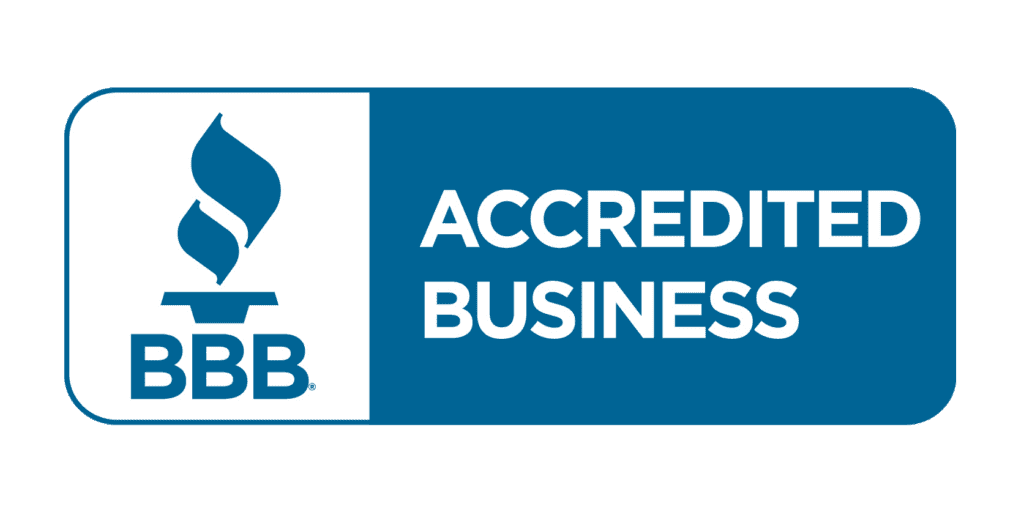
Discover the essential insurance-covered medical supplies for pediatric incontinence. Learn how to navigate insurance coverage for pediatric incontinence products and secure the best care for your child.
Managing pediatric incontinence requires the right medical supplies. Understanding insurance-covered medical supplies can reduce financial stress and ensure children get the best care. Many caregivers struggle to navigate insurance coverage for pediatric incontinence products, leading to confusion and frustration.
Limited information and complex policies make the process overwhelming. Finding the right supplies, knowing what insurance covers, and submitting claims add extra stress. A well-informed approach simplifies the process and ensures children receive the products they need. This guide covers everything about insurance-covered medical supplies, helping caregivers secure the right support without hassle.
What is Pediatric Incontinence?
Pediatric incontinence is the inability of children to control their bladder or bowel movements due to medical or developmental conditions.
Common Causes of Pediatric Incontinence
Several factors contribute to incontinence in children. Identifying the root cause helps in choosing the right insurance-covered medical supplies for effective management.
Medical Conditions 🏥
- Neurological disorders: Conditions like spina bifida affect bladder control.
- Urinary Incontinence: Frequent infections cause loss of bladder control.
- Diabetes: Increased urination leads to accidents.
Developmental and Behavioral Factors 👶
- Delayed bladder development: Some children take longer to develop full control.
- Anxiety or stress: Emotional factors impact bladder function.
- Dietary habits: Certain foods or drinks can trigger incontinence.
How Does Pediatric Incontinence Affect Daily Life?
Pediatric incontinence impacts a child’s confidence, social interactions, and overall well-being, making daily activities challenging.
Children and caregivers face multiple struggles that require reliable insurance-covered medical supplies for support.
Physical Challenges 🩺
- Skin irritation and infections – Prolonged wetness causes discomfort.
- Disrupted sleep – Frequent nighttime accidents lead to poor rest.
- Limited physical activities – Fear of accidents reduces participation in sports.
Emotional Struggles 💔
- Low self-esteem – Children feel embarrassed about accidents.
- Increased anxiety – Fear of leaks creates social distress.
- Frustration and guilt – Parents struggle with guilt over their child’s condition.
Social Impact 🤝
- Avoidance of social events – Fear of accidents prevents participation.
- Bullying risks – Some children face teasing from peers.
- Dependency on caregivers – Extra assistance is needed in daily routines.
Check Your Child’s Incontinence Risk! ✅
Answer these quick questions to determine if your child needs insurance-covered medical supplies:
❓ Does your child have frequent accidents despite toilet training?
❓ Do they experience bedwetting beyond the expected age?
❓ Have they been diagnosed with a medical condition affecting bladder control?
❓ Do they avoid social activities due to incontinence?
If you answered “yes” to two or more, consulting a healthcare provider for insurance coverage for pediatric incontinence products is recommended.
What Types of Insurance Cover Pediatric Incontinence Supplies?
Medicaid, private insurance, and supplemental programs offer coverage for insurance-covered medical supplies based on eligibility and policy terms.
Medicaid Programs
Medicare covers insurance-covered medical supplies for pediatric incontinence in most states. Each state has different eligibility rules.
✅ Who Qualifies?
- Children with diagnosed medical conditions.
- Families meeting income-based criteria.
- Those receiving disability benefits.
Private Insurance
Private insurance policies vary in their insurance coverage for pediatric incontinence products. Some plans cover supplies, while others require additional documentation.
✅ Key Factors to Check:
- Does your plan list cover incontinence supplies as durable medical equipment (DME)?
- Is a doctor’s prescription required?
- Are there limits on the number of supplies per month?
Supplemental Assistance Programs
Other programs may help cover diapers and other incontinence supplies when Medicaid or private insurance does not.
✅ Possible Resources:
- Nonprofit organizations
- State assistance programs
- Manufacturer discounts
📊 Insurance Coverage Breakdown for Pediatric Incontinence Products
| Insurance Type | Coverage Available? | Requirements |
| Medicaid Coverage | ✅ Yes (varies by state) | Medical necessity proof |
| Private Insurance | ⚠️ Limited (depends on policy) | Doctor’s prescription |
| Supplemental Programs | ✅ Yes (case-by-case) | Financial or medical qualification |
Which Pediatric Incontinence Products Are Typically Covered by Insurance?
Most insurance-covered medical supplies include diapers, pull-ups, bed pads, and related accessories for managing incontinence.
Commonly Covered Products 🛒
Essential Absorbent Products
- Pediatric Diapers & Pull-Ups: Provide comfort and protection for daytime and nighttime use.
- Booster Pads: Increases absorbency when additional support is needed.
- Bed Pads & Underpads: Protect bedding from nighttime leaks.
Supporting Medical Supplies
- Catheters: Used in cases of severe incontinence.
- Wipes & Skin Protection Creams: Prevent rashes and infections.
- Disposable Liners: They offer extra protection inside regular underwear.
📈 Coverage Comparison for Pediatric Incontinence Products

How Can You Determine Your Child’s Eligibility for Coverage?
Checking your policy details, consulting your provider, and securing medical documentation confirm eligibility for insurance-covered medical supplies.
Steps to Check Your Eligibility for Insurance-Covered Medical Supplies 📝
Step 1: Contact Your Insurance Provider 📞
✅ Ask if pediatric incontinence supplies are covered under DME (Durable Medical Equipment).
✅ Confirm coverage limits (monthly quantity allowed, brand restrictions).
✅ Ask about co-pays or out-of-pocket costs.
✅ Check if prior authorization or a doctor’s prescription is required.
Step 2: Get a Medical Diagnosis 🩺
✅ Schedule an appointment with your child’s doctor, urologist, or specialist.
✅ Obtain a written medical necessity statement explaining why supplies are essential.
✅ Ensure the diagnosis includes ICD-10 codes (insurance providers require these for approval).
✅ Request documentation of past treatments attempted (if applicable).
Step 3: Verify Supplier Partnerships 🏪
✅ Check if your insurance partners with specific suppliers for incontinence products.
✅ Ensure the supplier directly bills your insurance (to avoid upfront costs).
✅ Ask about delivery options for convenience.
Step 4: Submit Your Claim & Follow Up 📑
✅ Gather all necessary documents (doctor’s note, insurance forms, medical history).
✅ Submit your claim through the insurance portal or provider’s office.
✅ Follow up within 7-10 business days to check your claim status.
✅ If denied, request an appeal and provide additional medical justification.
What Are the Must-Have Incontinence Products for Children?
Children with incontinence need high-quality supplies to stay comfortable, dry, and protected.
Essential Pediatric Incontinence Products & Their Benefits
✅ Diapers & Pull-Ups: Provide full protection and easy changes. Ideal for both daytime and overnight use.
✅ Booster Pads: Increases absorbency when extra protection is needed. Work well with diapers and pull-ups.
✅ Bed Pads & Underpads: Keep bedding dry and reduce nighttime accidents. Disposable and washable options are available.
✅ Catheters: Needed for medical conditions requiring bladder drainage. Available in different sizes for comfort.
✅ Disposable Liners: Add an extra barrier inside underwear for light leakage protection.
✅ Wipes & Barrier Creams: Prevent rashes and irritation by keeping skin clean and moisturized.
How Do You Choose the Right Products for Your Child’s Needs?
Choosing the right supplies depends on your child’s incontinence severity, comfort, and lifestyle needs.
Tips for Selecting the Best Pediatric Incontinence Supplies
🔹 Assess Absorbency Needs: Determine if your child requires light, moderate, or heavy absorbency.
🔹 Consider Mobility & Independence: Pull-ups work best for active children, while diapers offer better leak protection.
🔹 Check Skin Sensitivity: Hypoallergenic and fragrance-free options help prevent irritation.
🔹 Look for Insurance-Covered Medical Supplies: Confirm insurance coverage for pediatric incontinence products before purchasing.
🔹 Test Different Brands: Every child has unique comfort preferences. Trying samples helps find the best fit.
Comparison of Pediatric Incontinence Products
| Product Type | Best For | Absorbency Level | Key Features | Insurance Coverage |
| Diapers | Infants & Young Children | High | Secure fit, strong leakage control | ✅ Often covered |
| Pull-Ups | Older, active children | Medium to high | Easy to pull on/off, good mobility | ✅ Often covered |
| Booster Pads | Extra protection in diapers | Medium to high | Adds absorbency, extends diaper use | ⚠️ Sometimes covered |
| Bed Pads | Nighttime incontinence | High | Protects bedding, disposable/washable | ✅ Often covered |
| Catheters | Medical bladder conditions | Varies | Different sizes & styles available | ✅ Usually covered |
| Disposable Liners | Light daytime leaks | Light to medium | Worn inside regular underwear | ⚠️ Sometimes covered |
| Barrier Creams & Wipes | Skin protection | N/A | Prevents rashes & irritation | ✅ Often covered |
How Do You Get a Prescription for Incontinence Supplies?
A healthcare provider must assess your child’s condition and provide a prescription for insurance-covered medical supplies.
Steps to Obtain a Prescription for Pediatric Incontinence Products
🩺 Step 1: Schedule a Doctor’s Visit
- Consult a pediatrician or specialist.
- Discuss your child’s incontinence needs and symptoms.
📄 Step 2: Request Medical Documentation
- Obtain a written diagnosis.
- Ensure it states medical necessity for incontinence supplies.
✅ Step 3: Confirm Insurance Requirements
- Check if your provider requires a referral.
- Verify the documentation needed for approval.
🏥 Step 4: Submit the Prescription to a Supplier
- Choose an insurance-covered medical supplies provider.
- Ensure they accept insurance and can bill directly.
What is the Process for Submitting an Insurance Claim for These Supplies?
Submitting an insurance benefits claim requires proper documentation and adherence to insurer guidelines.
Step-by-Step Guide to Filing an Insurance Claim
📝 Step 1: Gather Necessary Documents
- Doctor’s prescription.
- Diagnosis report.
- Insurance provider’s claim form.
📩 Step 2: Submit the Claim to the Insurance Provider
- Mail, fax, or upload the completed form and required documents.
- Confirm submission with your provider.
⏳ Step 3: Track the Claim Status
- Follow up with your insurer.
- Check for any additional documentation requests.
💵 Step 4: Receive Reimbursement or Direct Coverage
- Some suppliers bill insurance directly.
- If not, reimbursement is sent after claim approval.
FAQs:
1️⃣. Can I get pediatric incontinence supplies without a prescription?
Most insurance plans require a prescription for coverage, but some suppliers offer cash-pay options.
2️⃣. Are there eco-friendly incontinence products covered by insurance?
Some providers cover reusable or biodegradable options, but availability depends on your insurance plan.
3️⃣. How often can I reorder incontinence supplies through insurance?
Reorder frequency depends on your insurance policy, typically allowing monthly or quarterly refills.
4️⃣. What should I do if my insurance denies coverage for incontinence supplies?
You can appeal the decision by providing additional medical documentation and contacting your insurer.
5️⃣. Are there financial assistance programs for pediatric incontinence products?
Yes, Medicare coverage, nonprofit organizations, and manufacturer programs may help with costs.
Hassle-Free Medical Supply Delivery with UroStat Healthcare
UroStat Healthcare makes getting insurance-covered medical supplies simple and stress-free. They work with Medicare, Medicaid, and private insurers to ensure you receive the supplies you need—right at your doorstep.
Comprehensive Medical Supply Services
Pediatric Incontinence Support
✔ Medicaid-covered diapers, wipes, and supply bundles delivered monthly.
✔ Easy approval process for hassle-free ordering.
Learn More
Catheter Supplies for Men & Women
✔ Wide range of catheter types tailored to your needs.
✔ Monthly supply shipments for continuous care.
Explore Catheter Options
Ostomy Care Essentials
✔ High-quality ostomy pouches, barriers, and complete kits.
✔ Supplies are designed for comfort, security, and reliability.
View Ostomy Products
Diabetes & Continuous Glucose Monitoring (CGM)
✔ Advanced CGM systems for accurate diabetes management.
✔ Insurance-covered supplies for seamless support.
Discover Diabetes Care

Why Choose UroStat Healthcare?
✅ Nationwide Home Delivery: Get essential medical supplies anywhere in the U.S.
✅ Insurance Coordination: They handle approvals, paperwork, and billing for you.
✅ Trusted Brands: Products from top manufacturers like Bard, Cure Medical, Coloplast, and Hollister.
Get Started Today!
Start receiving your medical supplies without the hassle. Check your insurance eligibility or speak with a specialist to get personalized support.📞 Call Now: Contact UroStat Healthcare
💻 Apply Online: Check Eligibility



